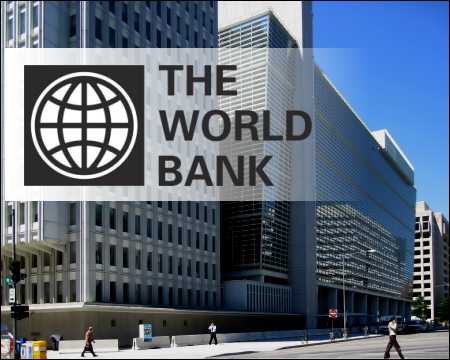The World Bank has projected Diaspora remittances into Nigeria to exceed $20 billion and estimated total remittances into the Sub-Saharan Africa (SSA) region to grow by 1.9% at the end of this year.
The Bretton Woods institution, in its latest ‘Migration and Development Brief’, predicted that the global remittance flows would continue to grow in 2023 although at a slower pace.
The report stated: “Remittances to Sub-Saharan Africa are estimated to grow by 1.9 per cent from $53bn in 2022 to $54bn in 2023. Projections indicate that remittances to the region will keep increasing, to $55bn by 2024. The slowed growth in remittances observed in 2023 is explained by the slow pace of growth in the high-income economies where many Sub-Saharan African migrants earn their income.
“Remittances to Nigeria, accounting for 38 per cent of remittance flows to the region, grew by about two per cent, while two other major recipients, Ghana and Kenya, posted estimated gains of 5.6 per cent and 3.8 per cent, respectively.
“In 2024, remittance flows to the region are projected to increase by 2.5 per cent. Remittances from the United States have remained stable. Although the euro area has recovered, its output remains 2.2 per cent below pre-pandemic projections,” the World Bank added.
The report also reflected that fixed exchange rates and capital controls were diverting remittances to the region from official to unofficial channels.
Specifically, at the current official market rate of N885.88 per dollar, the expected total diaspora remittances to Nigeria is estimated at N17.717 trillion.
On Diaspora remittance trend into SSA, the World Bank further clarified: “Regional growth in remittances in 2023 was largely driven by strong remittance growth in Rwanda (16.8 per cent), Ethiopia (16 per cent), and Mozambique (48.5 per cent).
“Nigeria, the largest remittance-recipient country in Sub-Saharan Africa, is expected to receive more than $20bn in official remittances by the end of 2023, a slight increase compared with the previous year. In Ghana, the second-largest recipient, remittances increased to $921.17m in 2023Q2, from $691.60 million in 2022Q2,” the report added.
In terms of remittance costs, the Washington D.C-based development finance institution reported that SSA remained the region with the highest remittance costs as the average cost of sending $200 to the Sub-Saharan Africa region slightly increased, averaging 7.9% in 2023Q2 compared with 7.2% in 2022Q2
Commenting on the report’s findings, the Global Director of the Social Protection and Jobs Global Practice at the World Bank, Iffath Sharif, said: “During crises, migrants have weathered risks and shown resilience to support families back home. However high inflation and subdued global growth are affecting how much money they can send. Labour markets and social protection policies in host countries should be inclusive of migrants, whose remittances serve as a vital lifeline for developing countries.”
Similarly, the Lead economist and lead author of the report, Dilip Ratha, explained that “remittances are one of the few sources of private external finance that are expected to continue to grow in the coming decade.
“They must be leveraged for private capital mobilisation to support development finance, especially via diaspora bonds. Remittance flows to developing countries have surpassed the sum of foreign direct investment and official development assistance in recent years, and the gap is increasing”, the economist added.
It would be recalled that data from the Central Bank of Nigeria (CBN) showed that in 2022, Diaspora remittances to Nigeria stood at $20.1 billion.






